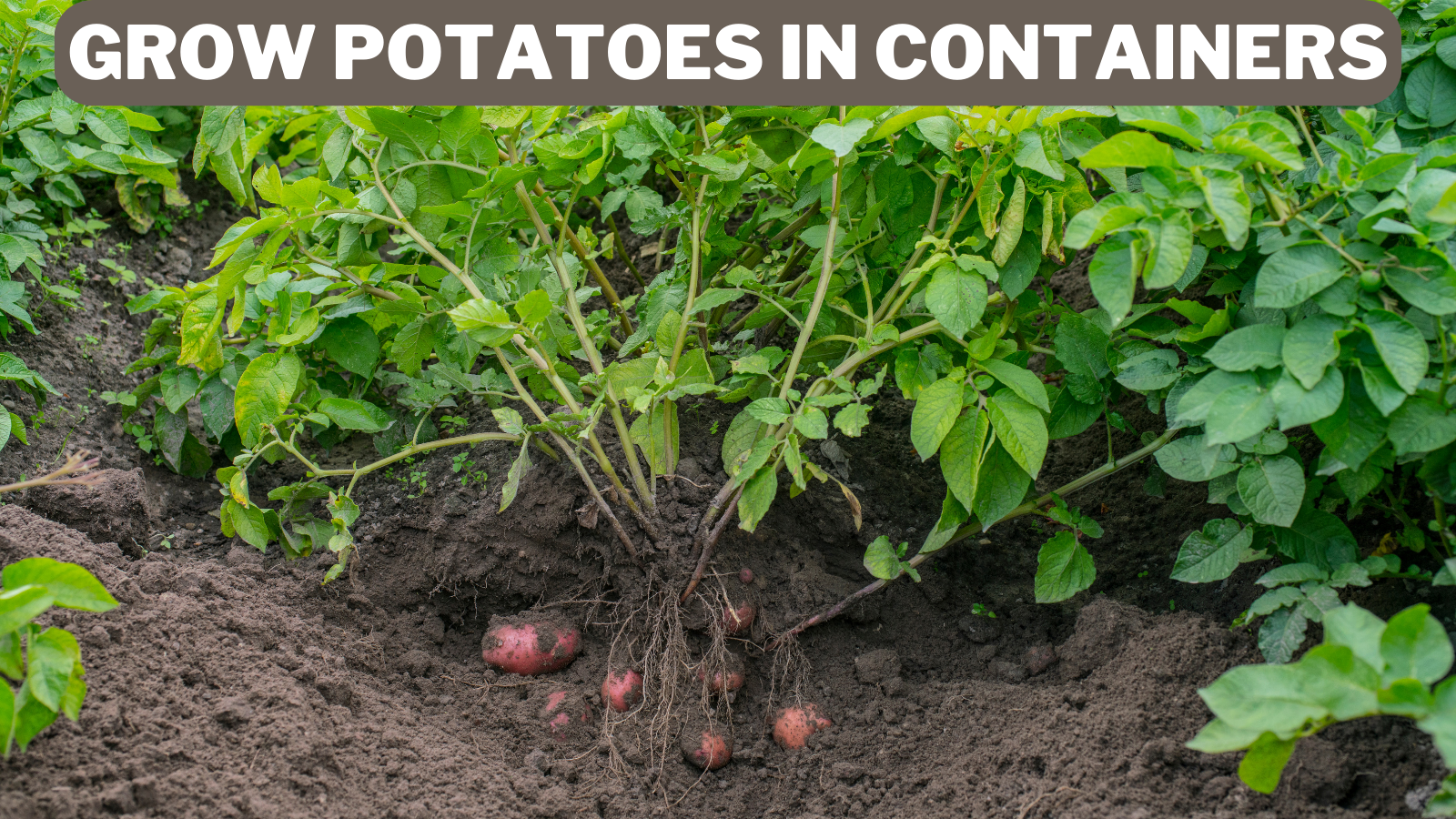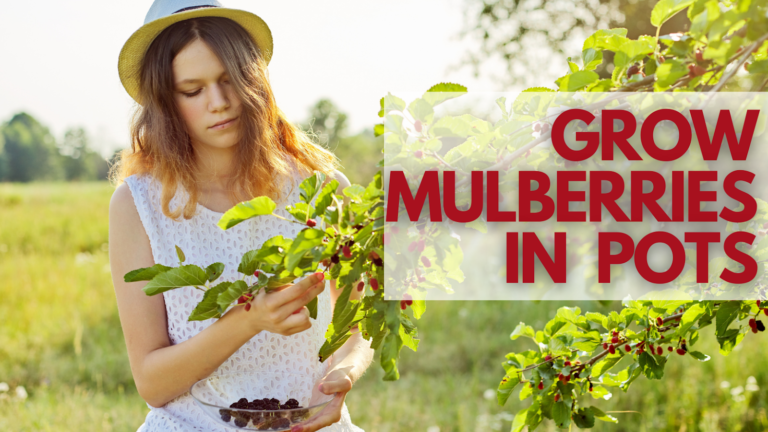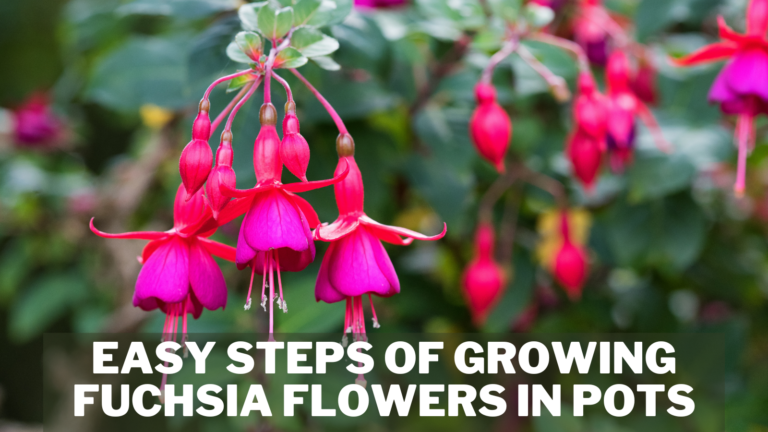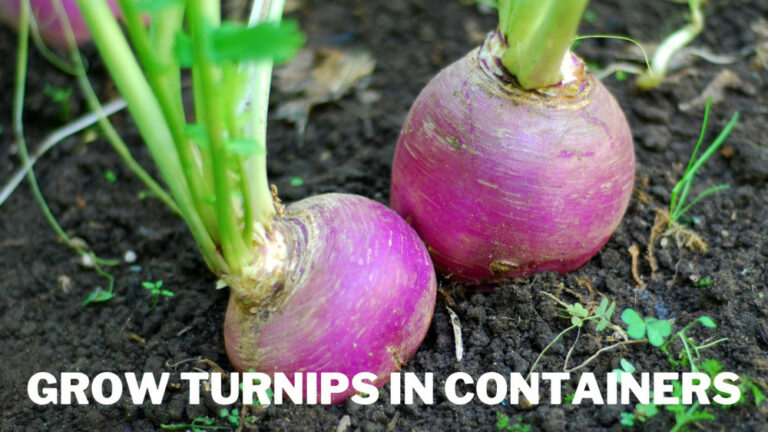Easy Steps To Grow Potatoes In Containers
Easy Steps To Grow Potatoes In Containers
You can grow potatoes in containers if you don't have enough space in your garden to plant potatoes or if you don't have one.
Growing potatoes in pots makes gardening more accessible to those with limited space. Nothing compares to the taste of freshly picked potatoes. Potatoes are simple to grow and make a healthy addition to any meal.
According to the United States Potato Board, one medium-sized potato contains only 110 calories.
Potatoes are a good source of potassium, iron, vitamin C, and vitamin B6. Two grams of fibre are provided by eating potatoes with the skin on.
Another reason to cultivate your potatoes is to avoid the pesticides used on store-bought potatoes. Harvesting potatoes in a container is easy because all tubers are in one location.
A potato tower, garbage can, Tupperware bucket, or even a gunnysack or burlap bag can be used to raise potatoes. From planting through harvesting, the process is simple and enjoyable for the entire family.
Before all, I'll share some information about potatoes. If you'd love to know more about potatoes, you will get easy-to-follow ideas from the blog.

History & Origin Of Potatoes
According to Wikipedia, pre-Columbian farmers initially cultivated the potato around Lake Titicaca in southern Peru and northwestern Bolivia.
Since then, it has spread worldwide and become a staple crop in many countries.
The earliest archaeologically proven potato tuber remains date from 2500 BC and were discovered on the shore of Ancon (central Peru).
Solanum tuberosum, the most extensively grown variety, is native to the Chiloé Archipelago and has been cultivated by local indigenous peoples since before the Spanish invasion.
According to conservative estimates, the potato was responsible for a fourth of the increase in population and urbanization in the Old World between 1700 and 1900.
Potatoes were the primary energy source for the Inca civilization, its ancestors, and its Spanish successors in the Altiplano.
The potato was introduced to Europe as part of the Columbian exchange following the Spanish conquest of the Inca Empire in the second half of the 16th century.
The staple was then delivered by European (and maybe Russian) mariners to territories and ports worldwide, mainly their colonies.
The potato took a long time for European and colonial farmers to accept. Still, around 1750, it became an essential food staple and field crop and played a crucial role in the European population boom of the 19th century.
Nutrition Benefits Of Potatoes
Potatoes are a good source of a variety of vitamins and minerals. A medium baked potato (6.1 ounces or 173 grams) contains the following nutrients:
- Calories: 161
- Fat: 0.2 grams
- Protein: 4.3 grams
- Potassium: 26% of the RDI
- Manganese: 19% of the RDI
- Fibre: 3.8 grams
- Vitamin C: 28% of the RDI
- Vitamin B6: 27% of the RDI
- Niacin: 12% of the RDI
- Folate: 12% of the RDI
- Magnesium: 12% of the RDI
- Phosphorus: 12% of the RDI
- Carbs: 36.6 grams
Types Of Potatoes
Potatoes are used by over a billion people globally, and global crop production surpasses 300 million metric tons.
Native potatoes come in over 4,000 types, most located in the Andes. They come in a wide range of sizes and forms. There are around 180 different types of wild potatoes.
Most Popular Kinds Of Potatoes For Container Gardening
Here, you will learn about the most common potato varieties. After that, we will go to grow potatoes in a container.

1. Russet Potatoes
A russet potato is a large, dark brown potato with few eyes and dark brown skin. The flesh is white, dry, mushy, and mealy and can be baked, mashed, or used to make french fries.
Russet potatoes are also known as Idaho potatoes in the United States.
Nutrition Facts Of Russet Potatoes
- Serving Size: 1 large potato
- Total carbs: 64.1g
- Net carbs: 57.2g
- Fat: 0.4g
- Protein: 7.9g
- Calories: 290
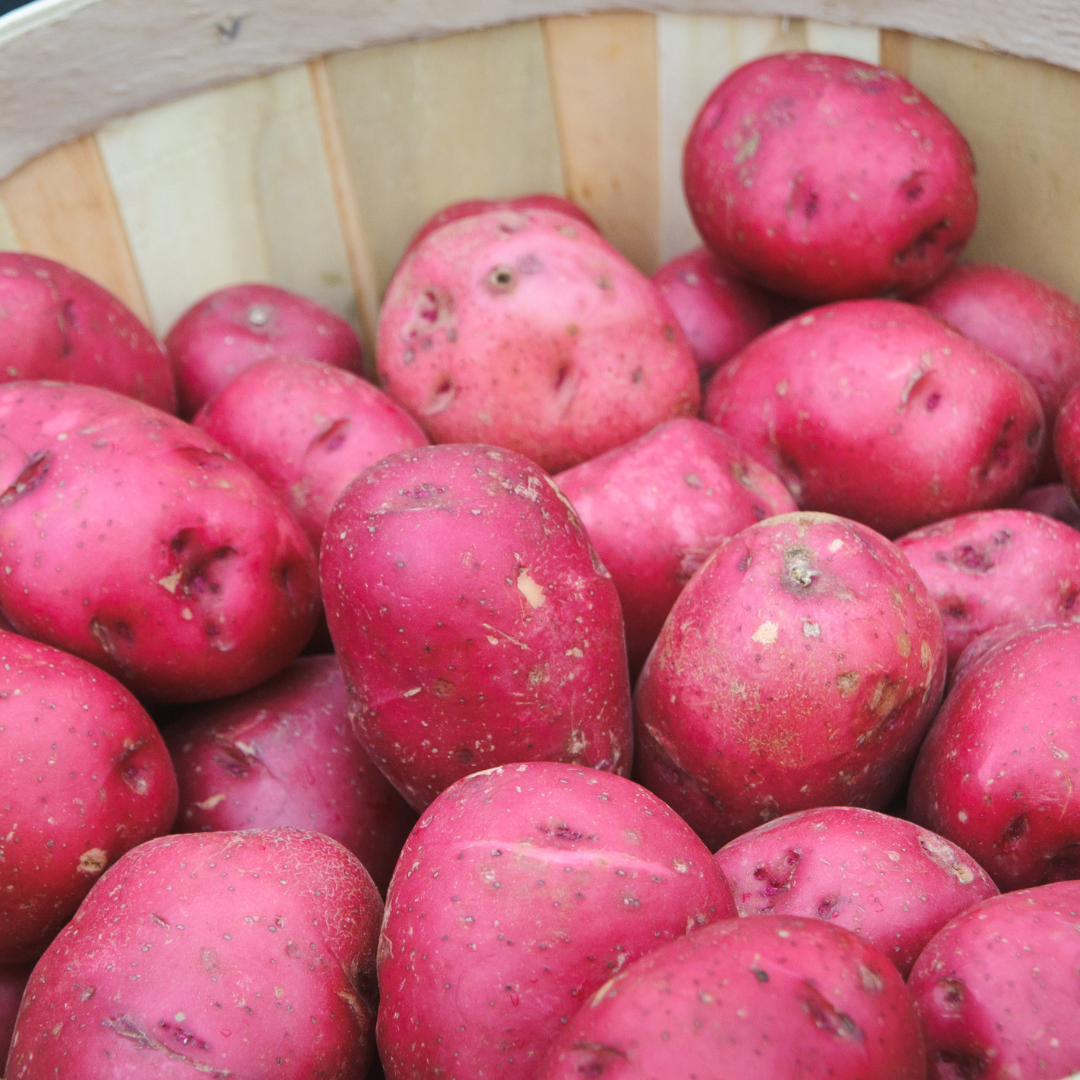
2. Red Potatoes
Red potatoes have a waxy texture rather than a starchy one. This makes them ideal for salads, soups, roasting, and boiling.
When cooked, they retain their excellent colour as well as their shape. They have thin skins that may and should be left on, preventing the peeling of the nutrients located right under their skin.
Nutrition Facts Of Red Potatoes
- Serving Size: 1 small potato
- Calories: 123
- Polyunsaturated: 0 g
- Carbohydrate: 27 g
- Protein: 3 g
- Sugar: 2 g
- Fibre: 2 g
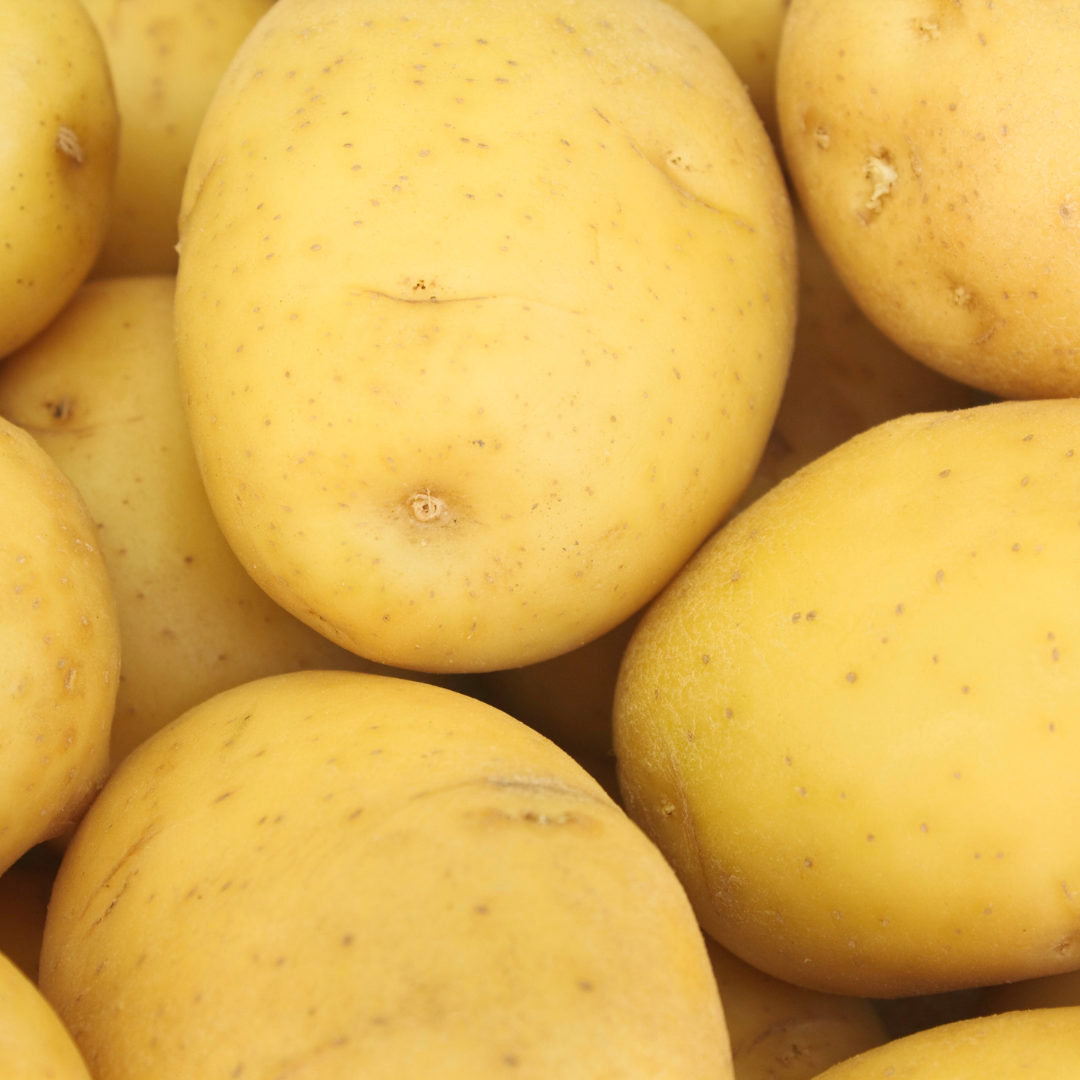
3. Yukon Gold Potatoes
Yukon Gold is a giant potato cultivar distinguished by its thin, silky, eye-free skin and yellow-tinged meat.
Garnet (“Gary”) Johnston of Guelph, Ontario, Canada, developed this potato in the 1960s with the help of Geoff Rowberry of the University of Guelph.
1966, the official cross-bred strain was created, and in 1980, ‘Yukon Gold' was introduced onto the market.
Nutrition Facts Of Yukon Gold Potatoes
- Serving Size: 1 small potato
- Total Fat: 0.2g
- Saturated Fat: 0.1g
- Polyunsaturated Fat: 0.1g
- Sodium: 14mg
- Potassium: 738mg
- Total Carbohydrates: 29g
- Dietary Fibre: 3g
- Sugars: 1.6g
- Protein: 3.5g
Easy Steps To Grow Potatoes In Containers

1. Select Ideal Kinds Of Potatoes
Early Potatoes
Early potato types are ideal for container gardening since they mature quickly and produce a single crop.
Early potato varieties grow in 65-80 days, whereas young potatoes are ready to harvest 6-7 weeks after sowing.
Small fresh potatoes have a delicate texture and a sweet flavour. Here are some of the early potato cultivars:
- Chieftain
- Dark Red Norland
- Irish Cobbler
- Sangre
- Red Gold
- Yukon Gold
Fingerling Potatoes
Fingerling potato varieties can also be grown in containers. Fingerling potatoes are small potatoes with a finger or oblong form and are 2-4 inches long.
The skin might be red, orange, purple, or white, while the flesh can be orange, purple, yellow, or white.
Their flavour is moderate, nutty, and earthy, with a firm, moist texture. Some of the fingerling potato cultivars are:
- AmaRosa,
- Banana,
- French Fingerling,
- Pinto, and
- Rose Finn Apple

2. Choose The Right Container
Potato Planter Bags are available for purchase. Harvesting young potatoes is a breeze with them. Three to four tubers will fit in each bag.
Alternatively, tubers can be grown in any large container. You can plant one plant in each of several tiny pots or use a larger container. Even an old dustbin or water barrel will suffice.
While purpose-made bags are available, old burlap sacks provide the best conditions for tuber plants. The cloth is breathable, well-draining, and robust enough to safely contain garden soil and plants.
The size of your harvest is rarely affected by the container. Producing numerous tubers in little pots produces a crop nearly the same size as cultivating the same number of plants in a huge container like trash. The main distinction is that the smaller containers will require less compost.
Regarding container gardening, the choice of container and what works best in your environment is entirely up to you.
It is best to ensure that the container you choose is clean and has drainage holes in the bottom.
What's The Maximum Number Of Plants You Can Fit In A Container?
Small or malformed fruit will result from overplanting a container. Plants will struggle to flourish and may fail to produce a harvest.
Each seed potato requires approximately 2.5 US gallons of garden soil to grow. This is around 10 litres.
3. Getting Your Potatoes Ready
You'll need to get the tubers ready before you start. Growing potatoes in containers requires similar preparation as cultivating in the ground. The potatoes must chit or sprout before being planted.
Place your tubers in an old egg box with their eye or eye pointing up to chit them. Place the egg box somewhere cool but light. Stubby, green shoots will emerge from the eyes. The seed potatoes can then be planted.
Allow your chosen types to chit before planting. Plant the tubers or seed potatoes in the soil after the sprouts are sturdy and evident.

4. Choose A Sunny Spot To Grow Potatoes
It's time to start arranging your potato container garden while waiting for your seed potatoes to cure.
Potatoes, like tomatoes and peppers, are nightshades. Like their fiery siblings, potato plants require much light and heat to thrive.
Look for a location with at least six hours of direct sunlight each day when deciding where to put your potato container garden. Placing pots against a south-facing wall will provide the heat the plants require.
5. Maintain Soil Moisture To Grow Potatoes
Potatoes prefer moist soil that isn't too wet but doesn't like standing water. Drainage should not be an issue because you prepared your pots with plenty of plant holes.
Poke your finger under the soil's surface daily to check the moisture level. If the first inch or so of soil is dry, water liberally.
You'll probably have to water every day as the season progresses. Morning watering will help prevent evaporation and keep your plants from becoming soggy overnight.

6. Fertilize Your Potato Plants
Like other nightshades, potatoes deplete nutrients quickly, especially when grown in pots. If you start with fresh potting soil, you shouldn't have to start fertilizing your plant until it's a few inches tall.
Treat a high-phosphorus vegetable fertilizer every two weeks to encourage rapid tuber growth.
7. Take Care Of Your Potato Crop
Growing them in pots requires significantly less effort than growing them in the ground. The crops will not need any digging or weeding. If weeds emerge, they can be plucked out or treated with a homemade weed killer.

8. Watering Requirements Of Container Potatoes
Watering container potatoes can be a balancing act, as too little or too much water can harm your plants.
Generally, you'll want to keep the soil moist but not waterlogged. The watering frequency will depend on several factors, including soil type, container size, temperature and humidity, and the growth stage.
It's best to water deeply and thoroughly so the water reaches the roots rather than just moistening the surface.
Consider using a drip irrigation system or a self-watering container to help maintain consistent moisture levels.
Monitor your plants closely and adjust your watering schedule to ensure healthy growth and a bountiful harvest.
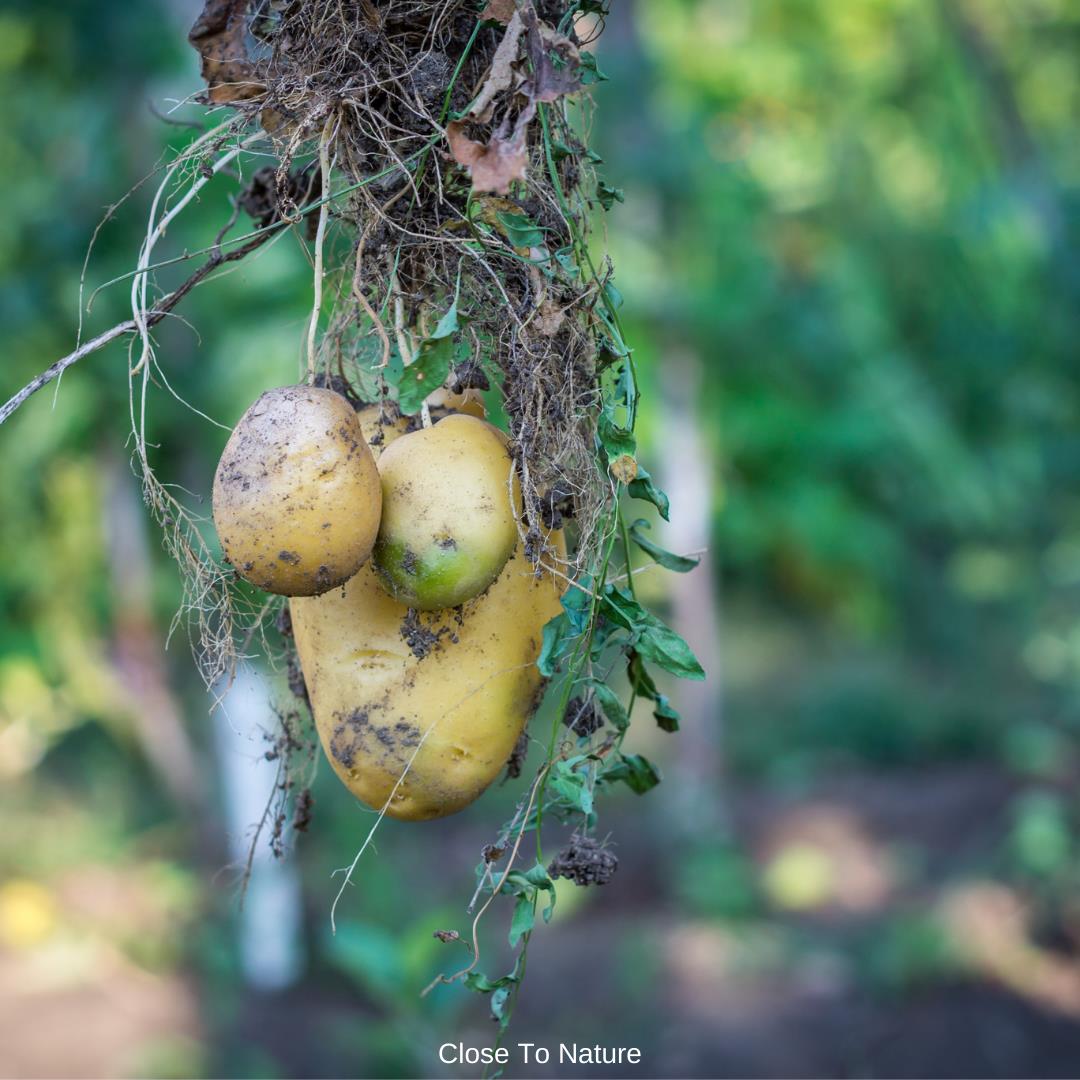
9. Harvesting Container Potatoes
Harvesting container potatoes is an exciting moment for any gardener. Once your potato plants have reached maturity, you can begin harvesting by gently digging into the soil with a spade or a fork.
It's essential to be careful not to damage the tubers while harvesting, as any cuts or bruises can lead to spoilage.
You can start harvesting new potatoes once they reach about the size of a golf ball, but for larger, mature potatoes, wait until the foliage has started to yellow and die back.
This indicates that the plant has stopped producing new tubers, and it's time to harvest the remaining potatoes.
Once you've dug up your potatoes, let them dry in a warm, dry, well-ventilated area for a few days before storing them in a cool, dark place.
Proper harvesting and storage allow you to enjoy your container-grown potatoes for weeks.
10. Pests & Diseases Of Potatoes
Potatoes are relatively hardy and disease-resistant, particularly when grown in pots away from other foliage.
However, a few difficulties could arise. Some typical issues encountered when growing potatoes in pots are listed below.
1. The Inability To Emerge
Purchasing high-quality seed potatoes and planting them with 4 to 6 inches of warm soil should yield shoots in only a few weeks.
Chemical additives that slow the sprouting process are often found in store-bought potatoes, causing them to fail to grow shoots.
2. Holes In Leaves Or Tubers
Various worms and bugs eat potatoes and potato foliage. These problems can be avoided by cleaning pots with soapy water and using new potting soil yearly.
Keep your container garden isolated from other gardens or open soil areas to prevent bugs from spreading.
3. Tops Are Green, But There Are No Tubers
Fewer potatoes will form during tuber production if the weather is hot–especially at night.
Moving your pots out of the sun and into a cool, shady place in the late afternoon, then returning in the morning can help drop the overnight soil temperature and boost tuber growth.
Advantages Of Growing Potatoes In Containers
1. No Soil Contamination
You won't have to worry about crop rotation, soil-borne diseases, or pests from the previous season because you're using fresh potting soil.
2. Containers Can Be Moved Around And Placed Anywhere
Containers are easy to maintain and can be placed on your patio, balcony, or any other part of your yard that receives direct sunlight.
3. Easy Harvest
It's easier to harvest potatoes than dig them up, and there's less risk of damaging the tubers with a fork or shovel. Rather than digging, empty the container, and there they are!
4. Containers Protect The Potatoes From Soil Pests
The container keeps rats and other pests away from the potatoes in the garden soil.
Grow potatoes in containers if you have a problem with moles, gophers, voles, or chipmunks tunnelling through your garden and consuming your tubers beneath the soil.
They are also protected from wireworms, grubs, and other pests.
Storage Of Potatoes
Potatoes are a versatile and popular vegetable that can be enjoyed in many different ways, from mashed to fried to baked.
However, to keep potatoes fresh and prevent them from spoiling, it is important to store them properly.
One of the best ways to store potatoes is in a cool, dark place with good ventilation. This could be a pantry, cellar, or a cool, dry kitchen corner.
It is important to keep potatoes away from direct sunlight or any heat sources, as this can cause them to spoil quickly.
When storing potatoes, it is also important to keep them dry. Moisture can cause potatoes to rot, so choose a dry storage location with good air circulation.
Avoid storing potatoes in plastic bags, as these can trap moisture and promote spoilage.
If you have many potatoes to store, consider using a potato bin or storage container specifically designed for this purpose.
These containers provide ample ventilation and help keep your potatoes fresh for longer. It is also important to check your stored potatoes regularly for any signs of spoilage, such as soft spots or discoloration.
Remove any spoiled potatoes immediately to prevent the spread of rot to other potatoes.
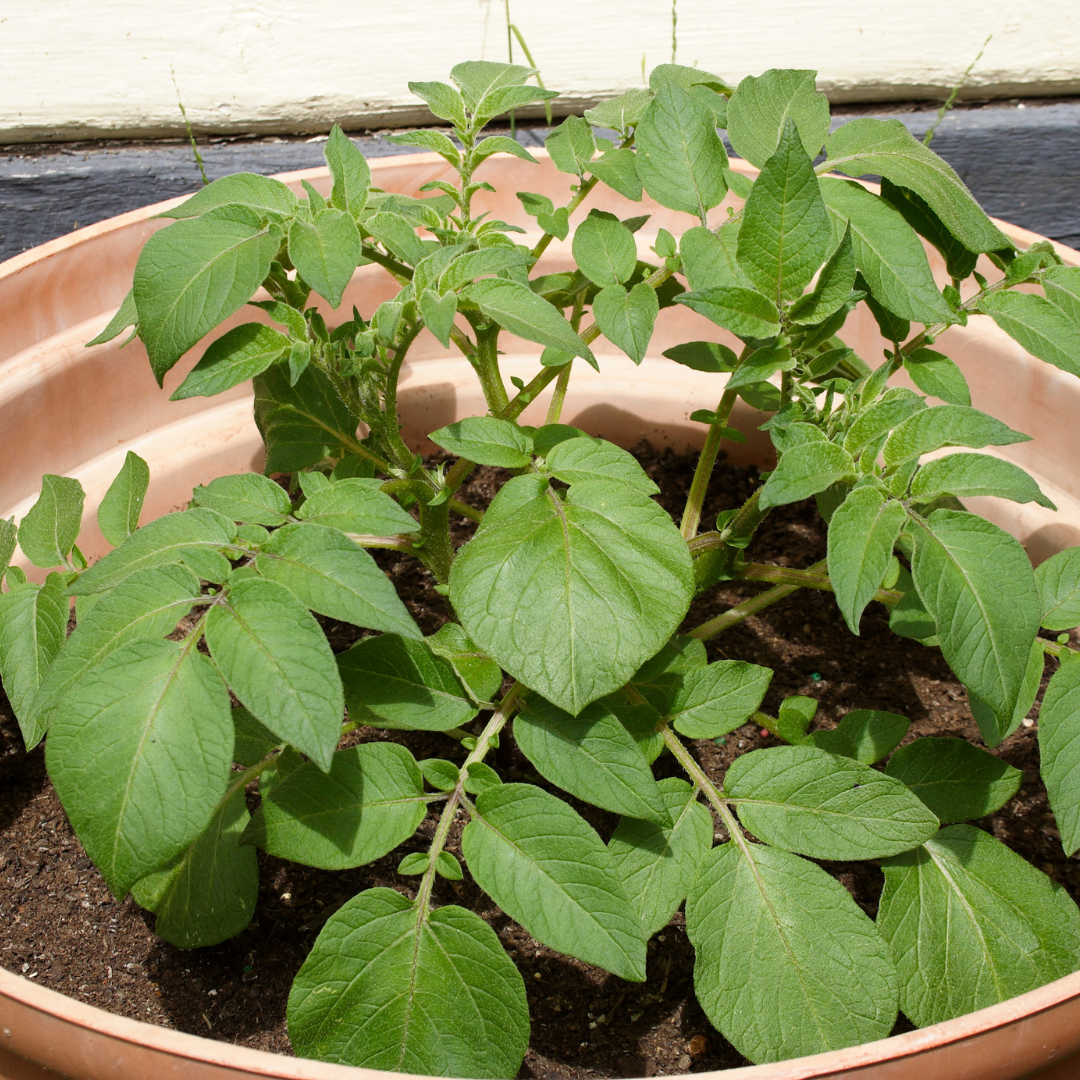
Conclusion
Growing potatoes in containers is a great option for those with limited space or who want to try gardening without the commitment of a large plot of land.
Anyone can grow delicious potatoes with the right soil, container, and care.
Once you've planted your potatoes, could you make sure to water them regularly and provide them with enough sunlight?
You may also need to fertilize them periodically. As the plants grow, you'll need to “hill” them by adding more soil to the container to encourage the growth of more tubers.
I trust you enjoyed this article on the Easy Steps To Grow Potatoes In Containers. Please stay tuned for more blog posts to come shortly.
JeannetteZ
>>>Please click here to read my all-inclusive article, About The Essential Companion Planting Guide<<<
>>>Please click here to read my all-inclusive article about Container Gardening<<<
Are you interested in homegrown herbs and medicine? Please click here to find out more about it!
Your Opinion Is Important To Me
Do you have thoughts, ideas, or questions? I would love to hear from you. Please leave me your questions, experiences, and remarks about this article on the 10 Easy Steps To Grow Potatoes In Containers in the comments section below. You can also email me at Jeannette@Close-To-Nature.org.
Disclosure
This post may contain affiliate links. I earn from qualifying purchases as an Amazon Associate and other affiliate programs. Please read my full affiliate disclosure.
You might also enjoy these blog posts:
11 Secrets To Improve Growing Tomatoes In A Container
80 Best Colour-Inspired Dog Names

